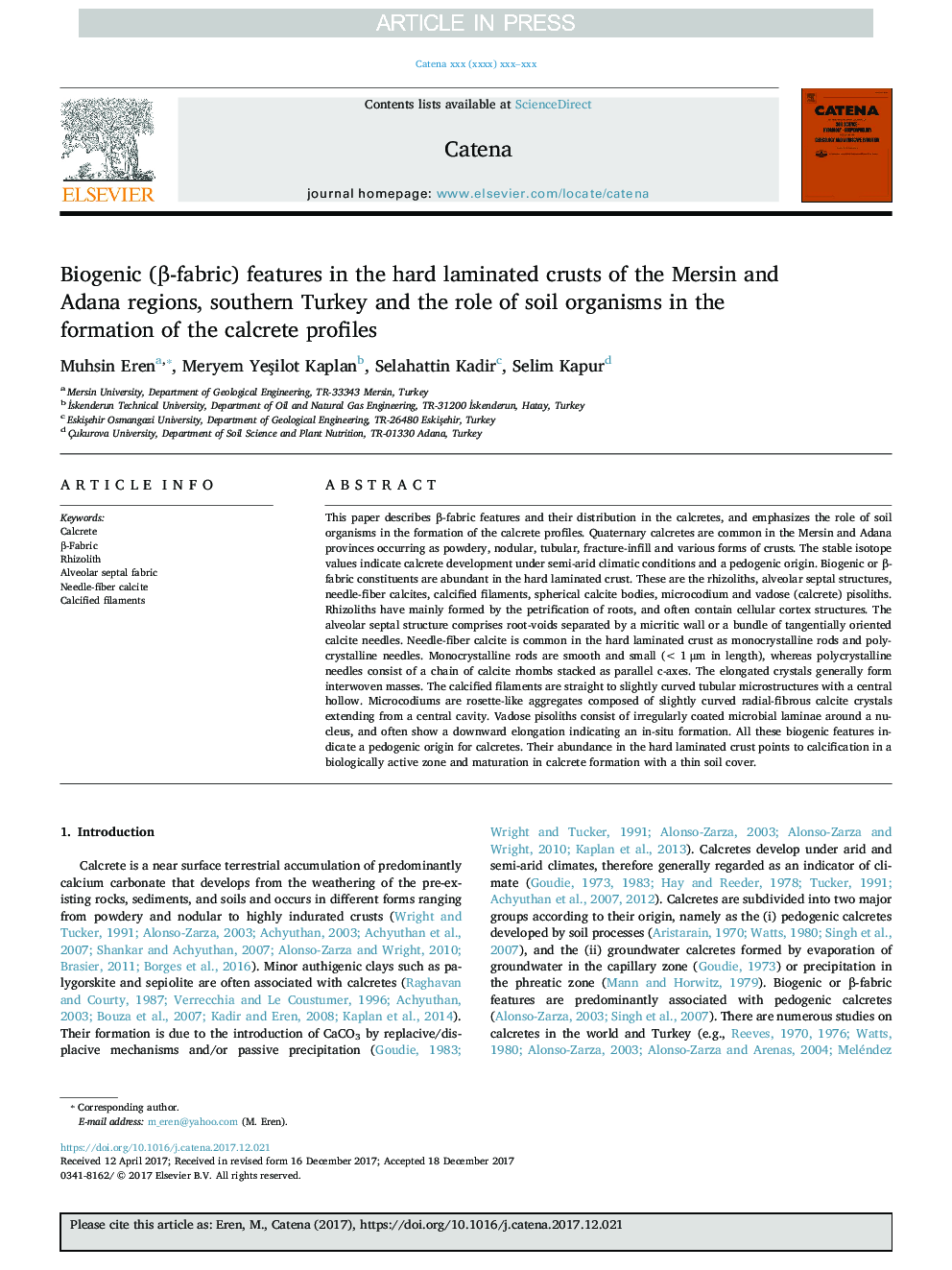| کد مقاله | کد نشریه | سال انتشار | مقاله انگلیسی | نسخه تمام متن |
|---|---|---|---|---|
| 8893442 | 1629186 | 2018 | 13 صفحه PDF | دانلود رایگان |
عنوان انگلیسی مقاله ISI
Biogenic (β-fabric) features in the hard laminated crusts of the Mersin and Adana regions, southern Turkey and the role of soil organisms in the formation of the calcrete profiles
دانلود مقاله + سفارش ترجمه
دانلود مقاله ISI انگلیسی
رایگان برای ایرانیان
کلمات کلیدی
موضوعات مرتبط
مهندسی و علوم پایه
علوم زمین و سیارات
فرآیندهای سطح زمین
پیش نمایش صفحه اول مقاله

چکیده انگلیسی
This paper describes β-fabric features and their distribution in the calcretes, and emphasizes the role of soil organisms in the formation of the calcrete profiles. Quaternary calcretes are common in the Mersin and Adana provinces occurring as powdery, nodular, tubular, fracture-infill and various forms of crusts. The stable isotope values indicate calcrete development under semi-arid climatic conditions and a pedogenic origin. Biogenic or β-fabric constituents are abundant in the hard laminated crust. These are the rhizoliths, alveolar septal structures, needle-fiber calcites, calcified filaments, spherical calcite bodies, microcodium and vadose (calcrete) pisoliths. Rhizoliths have mainly formed by the petrification of roots, and often contain cellular cortex structures. The alveolar septal structure comprises root-voids separated by a micritic wall or a bundle of tangentially oriented calcite needles. Needle-fiber calcite is common in the hard laminated crust as monocrystalline rods and polycrystalline needles. Monocrystalline rods are smooth and small (< 1 μm in length), whereas polycrystalline needles consist of a chain of calcite rhombs stacked as parallel c-axes. The elongated crystals generally form interwoven masses. The calcified filaments are straight to slightly curved tubular microstructures with a central hollow. Microcodiums are rosette-like aggregates composed of slightly curved radial-fibrous calcite crystals extending from a central cavity. Vadose pisoliths consist of irregularly coated microbial laminae around a nucleus, and often show a downward elongation indicating an in-situ formation. All these biogenic features indicate a pedogenic origin for calcretes. Their abundance in the hard laminated crust points to calcification in a biologically active zone and maturation in calcrete formation with a thin soil cover.
ناشر
Database: Elsevier - ScienceDirect (ساینس دایرکت)
Journal: CATENA - Volume 168, September 2018, Pages 34-46
Journal: CATENA - Volume 168, September 2018, Pages 34-46
نویسندگان
Muhsin Eren, Meryem YeÅilot Kaplan, Selahattin Kadir, Selim Kapur,